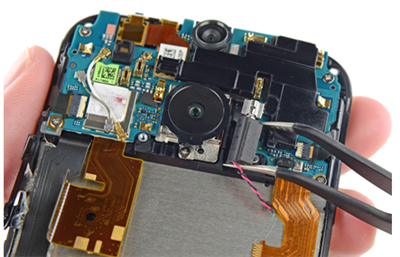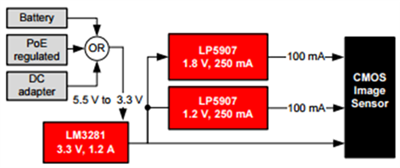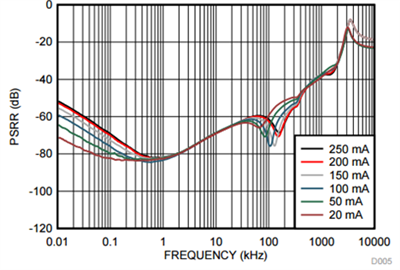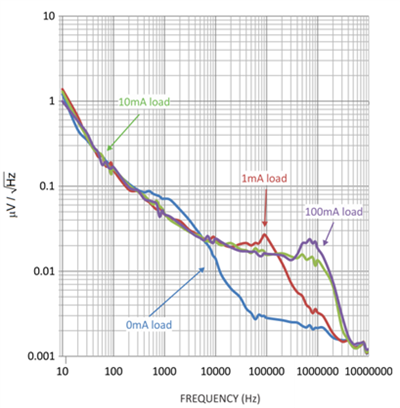SSZTB42 July 2016 LP5907
Digital imaging electronics are becoming more portable and integrated into high-quality solutions. The cohesiveness of high-performance and small-sizes in camera applications is often influenced by the low-dropout (LDO) voltage regulators powering the complementary metal-oxide semiconductor (CMOS) image sensor in cameras. Figure 1 is an example of the circuitry used for cameras in a smartphone.
 Figure 1 Camera Circuitry in a
Smartphone
Figure 1 Camera Circuitry in a
SmartphoneWe’ve all heard the term “pixel,” but what does that mean to consumers? Pixel size can help determine the size of each discrete photodetector in a CMOS image sensor. It is imperative to know the size of these photodetectors because that is what captures light to record the perfect image. Figure 2 illustrates the process.
 Figure 2 Production of High-quality
Images
Figure 2 Production of High-quality
ImagesSo all you need is a large image sensor to capture good quality images, right? Not quite. These CMOS image sensors need to be powered in a specific way given their sensitivity to noise. The components that make up a CMOS image sensor are extremely susceptible to transients caused by the power supply. A noisy power supply affects a pixel’s ability to properly capture light, which results in a poor-quality image. Figure 3 is an example of a high-level power-tree block diagram for powering a CMOS image sensor.
 Figure 3 High-level Power-tree Block
Diagram for a CMOS Image Sensor
Figure 3 High-level Power-tree Block
Diagram for a CMOS Image SensorAn LDO voltage regulator filters out the unwanted noise from the power supply. To power the image sensor, you will want to look at the noise specs of the LDO to make sure it meets the specifications of the end equipment. Let’s use the LP5907, a high-performance LDO, as an example.
Figure 4 shows the power-supply rejection ratio (PSRR) swept from frequencies between 10Hz to 10MHz. The PSRR characterization allows the LDO to block noise produced by the power supply. Simply put, the higher the PSRR, the more noise the LDO can block from the power supply.
 Figure 4 LP5907 PSRR
Figure 4 LP5907 PSRRBut this is only at the input of the LDO; what about the output? That is where spectral-noise density comes in. Figure 5 shows the output-voltage noise swept between 10Hz to 10MHz. The lower the output-voltage noise, the less noise transferred into the CMOS image sensor.
 Figure 5 LP5907 Spectral Noise
Density
Figure 5 LP5907 Spectral Noise
DensityTable 1 lists the LP5907’s PSRR and output-voltage noise specifications.

|
The LP5907 has an extremely high PSRR of 82 dB at 1 kHz and 6.5 µVRMS at a full load current. The combination of these parameters suggests that this LDO could be an essential part of your design when powering CMOS image sensors. Because the LP5907 is also extremely compact, you can use it without much concern for board space. Table 2 lists the package information for the LP5907.

|
When it comes to camera applications, using an LDO voltage regulator produces more accessible and improved digital imaging solutions. LDOs can offer superior performing elements, while also being highly compact. Figure 6 shows an example of a distorted input signal with a ripple of 50-mVpk-pk at a frequency of 3-MHz being rejected and filtered by the LP5907 at the output.
 Figure 6 Comparison between Input
Voltage Ripple and LP5907 Regulated Output
Figure 6 Comparison between Input
Voltage Ripple and LP5907 Regulated OutputCheck out TI’s complete portfolio of LDO solutions.
Additional Resources
- Learn more about these TI Designs reference designs:
- Read the blog post, “How LDOs meet power requirements for automobile camera modules.”